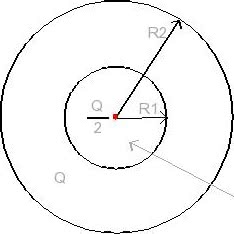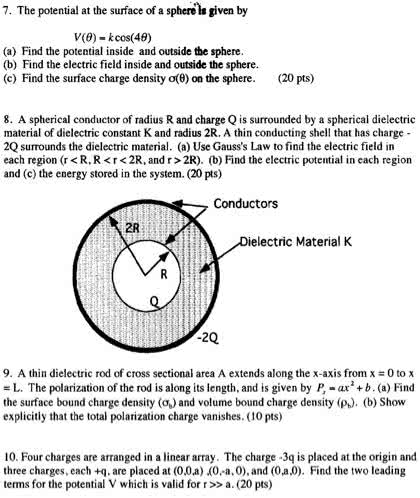PHY 2048L Study Guide - Quiz Guide: Electric Potential Energy, Relative Permittivity, Dielectric Strength
Document Summary
Charge of a conductor in electrostatic equalibrium, the charge density is zero throughout the material of the conductor. All excess or deficit charge resides in the surface of the conductor (cid:894) e(cid:895) just outside a (cid:272)o(cid:374)du(cid:272)to(cid:396) E(cid:894)(cid:374)(cid:895) = /(cid:632) electric field for a line charge of infinite length. E(cid:894)r(cid:895) = (cid:1006)k(cid:644)/r = (cid:1005)/[(cid:1006) (cid:632) ] (cid:894)(cid:644)/r(cid:895) electric field for the axis of a charged ring. E(z) = [kqz]/(z + a )((cid:1512)1. 5) electric field for the axis of a charged disk. E(cid:894)z(cid:895) = si(cid:374)g(cid:894)z(cid:895) * /(cid:894)(cid:1006)(cid:632) (cid:895) [(cid:1005) - (cid:894)(cid:1005) +r(cid:1016)/z(cid:1016)(cid:895) ] electric field for a charged infinite plane. E(cid:894)z(cid:895) = sig(cid:374)(cid:894)z(cid:895) /(cid:894)(cid:1006)(cid:632) (cid:895) electric field for a charged thin spherical shell. E(cid:894)(cid:396)(cid:895) = (cid:1005)/[(cid:1008) (cid:632) ] [ q/(cid:396)(cid:1016)] (cid:396) > r. E(r) = 0 r < r potential difference. V = v(b) - v(cid:894)a(cid:895) = u/(cid:395) = (cid:894)a(cid:895) (cid:894)(cid:271)(cid:895) [(cid:894) e(cid:895) * d(cid:894) l(cid:895)] electric potential due to a point charge.


